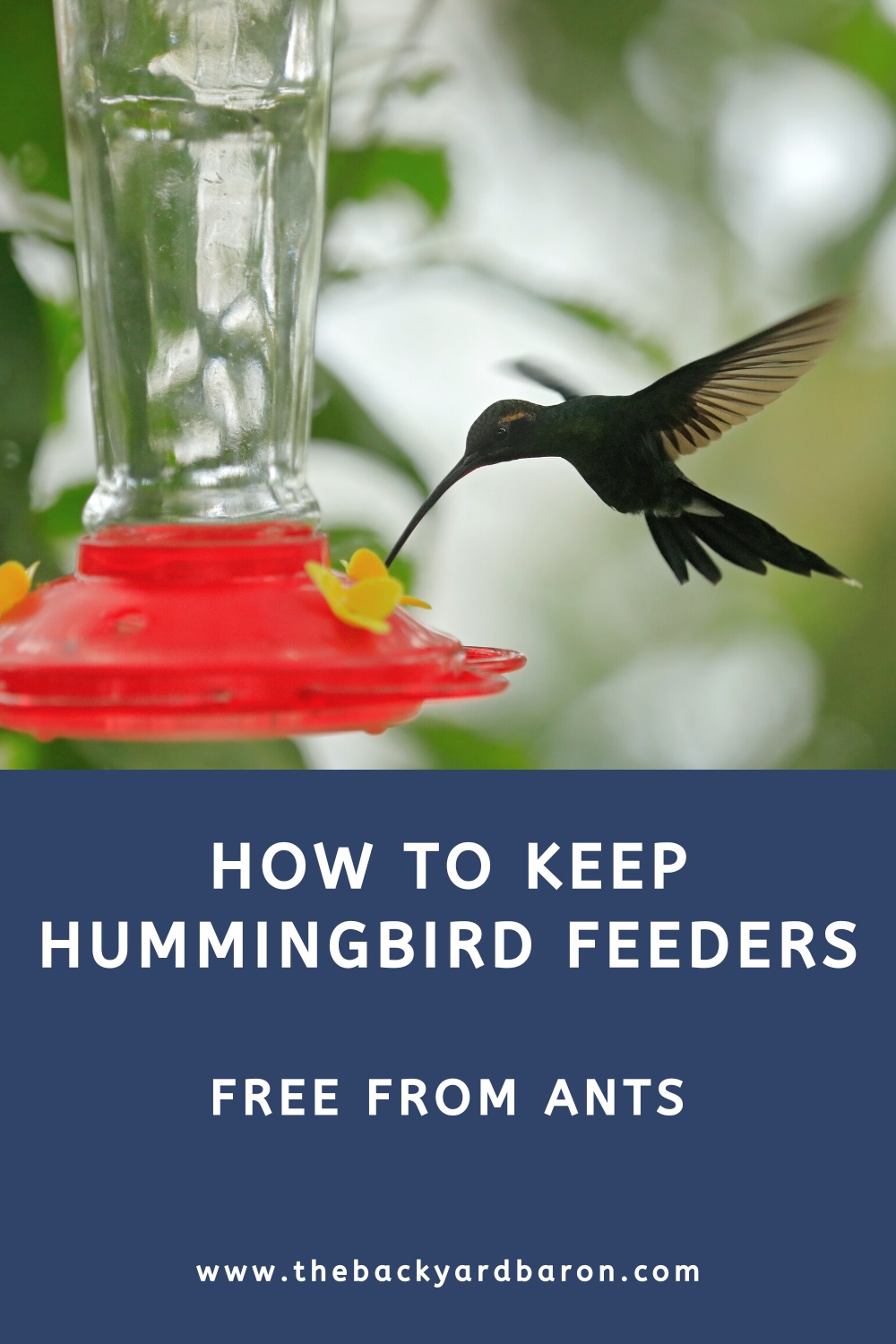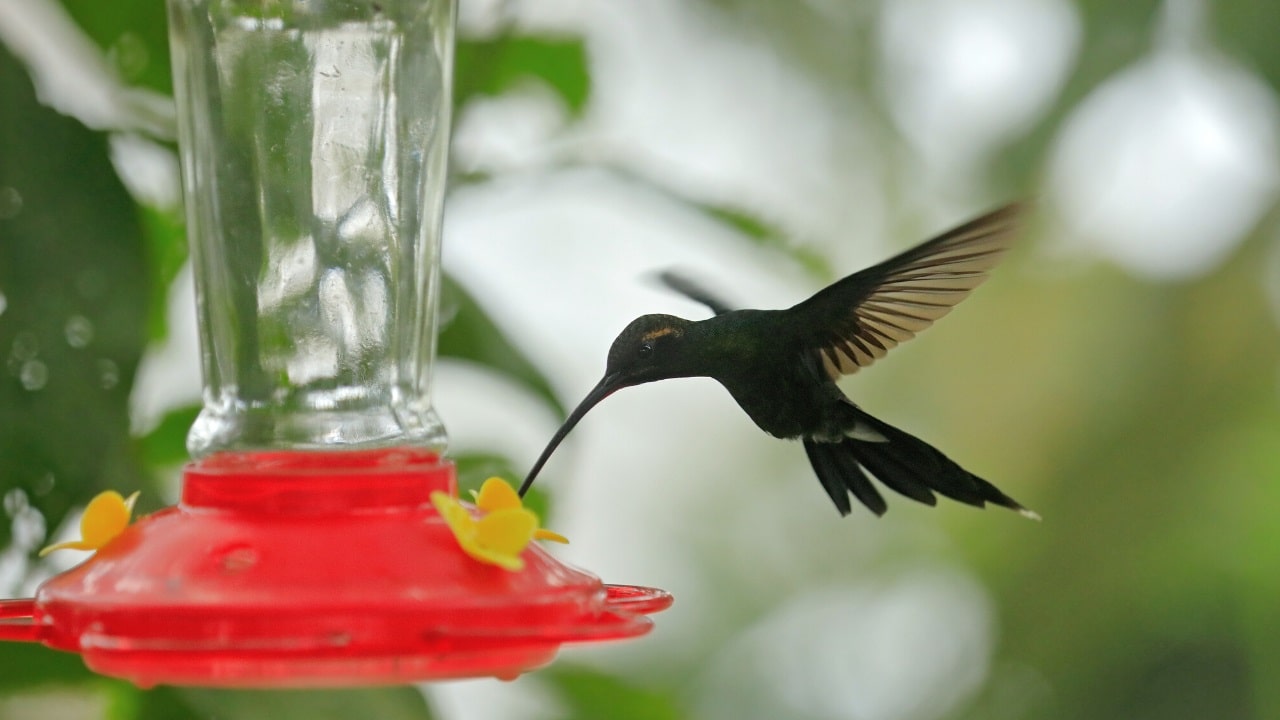I may earn a small commission from purchases made through product links on this website at no extra cost to you. As an Amazon Associate I earn from qualifying purchases.
Last updated: November 3, 2023
Hummingbirds love the sweet taste of sugar water. Unfortunately, that love is shared by ants. If you have a hummingbird feeder, you probably know this fact all too well.
So the question is, how do you allow hummingbirds to enjoy your feeders without letting the ants steal all the sweet water you’ve worked so hard to make?
The key to keeping ants out of your hummingbird feeder is twofold. First, you need to work to ensure your feeder isn’t attracting them. Second, you need to employ some methods to prevent these surprisingly acrobatic insects from accessing the feeder.
Below, you’ll find eleven solutions to keep ants out of hummingbird feeders without restricting access to the birds you want to see.
11 Ways to Keep Hummingbird Feeders Ant Free
Try the following 11 tips to keep your hummingbird feeder ant-free.
1. Get Rid of That Leaky Feeder
Not only do ants have five times more odor receptors on their antennae than other insects, but the odor sensory region of their brain is bigger than many mammals, including humans.
This means that these adventurous bugs will have no problem finding a sticky drop of sweet water in even the largest of yards.
One way to keep them from instantly tracking down your hummingbird feeder is to keep all that sweet-smelling liquid safely inside. Any spillage that reaches the ground will bring them in almost immediately. And once they finish lapping up the sugar on the ground, they’ll start looking for the source.
In short, if your hummingbird feeder is leaky, then it’s time to repair it or get a new one.
2. Keep Your Feeder From Getting Too Hot
Even a brand new feeder will leak if the solution inside gets too hot.
When the sun beats down on your hummingbird feeder, it causes the water to heat up and expand. If the feeder is full, this will cause the sugar water to push through the feeding holes and drip onto the ground.
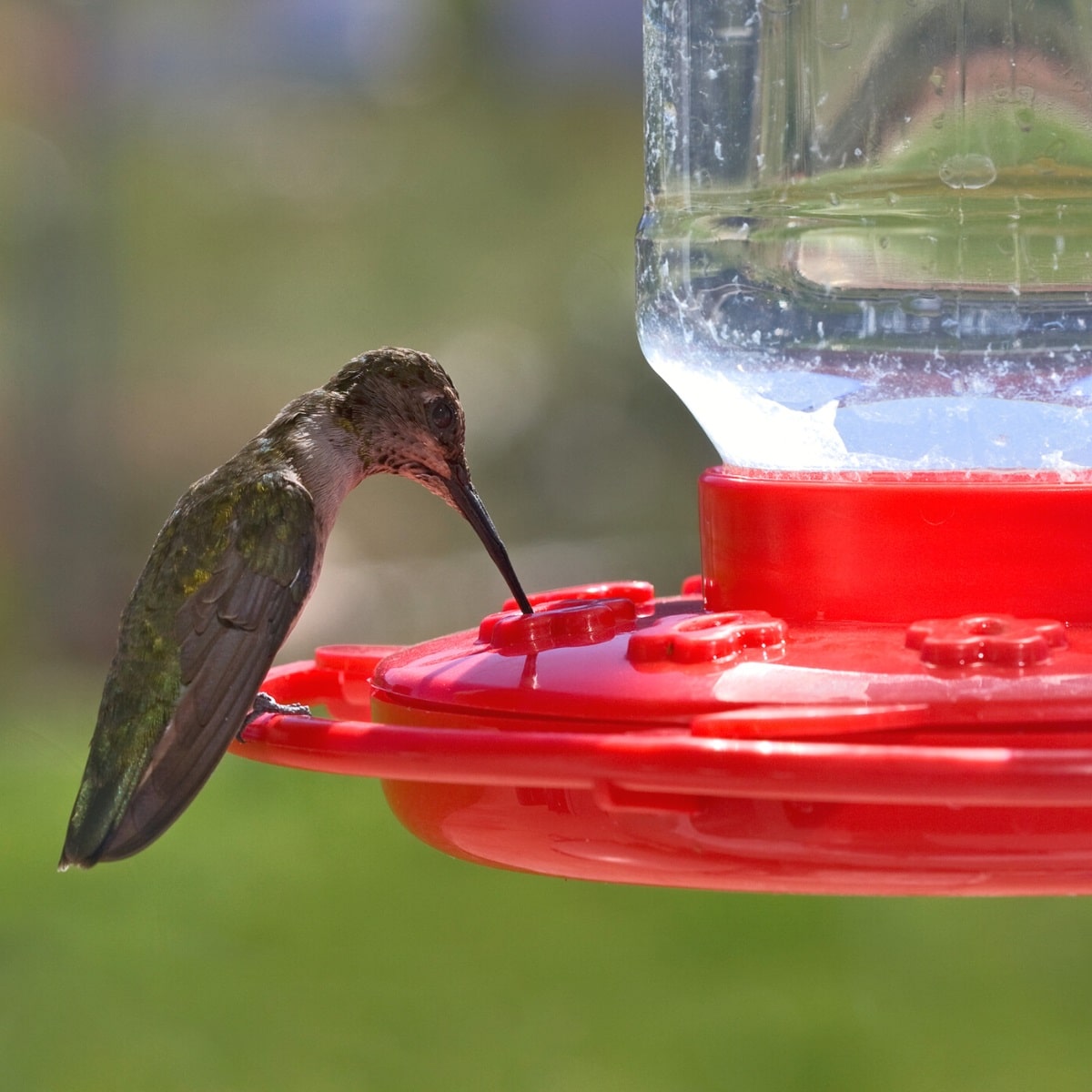
By placing your feeder in a spot that’s protected from direct sunlight but not overly shady, you can avoid the solution getting hot while still attracting birds.
You should also remember to leave space in your feeder bottle when filling it, so the solution has room to expand during hotter temperatures.
3. Clean the Outside of the Feeder
You already know how important it is to keep the inside of the feeder bottle clean for your hummingbirds. But cleaning the outside of the feeder is just as important if you want to keep ants away.
As birds feed and the liquid inside expands and contracts with changing temperatures, sugar water will get on the outside of the feeder. This mess builds up over time and acts like a beacon for ants.
Whenever you pull your feeder down to refill it, be sure to clean all surfaces with hot soapy water. Make sure to scrub those detailed areas as well so dried sugar won’t collect in the crevices.
4. Move Your Feeder
If you have an active ant problem in your hummer feeder, then the first thing you should do is move it.
Once ants have found a continuous food source, they’ll leave a unique scent trail to lead other drones in their colony to the source. By moving the feeder, you can quickly disrupt this feeding process.
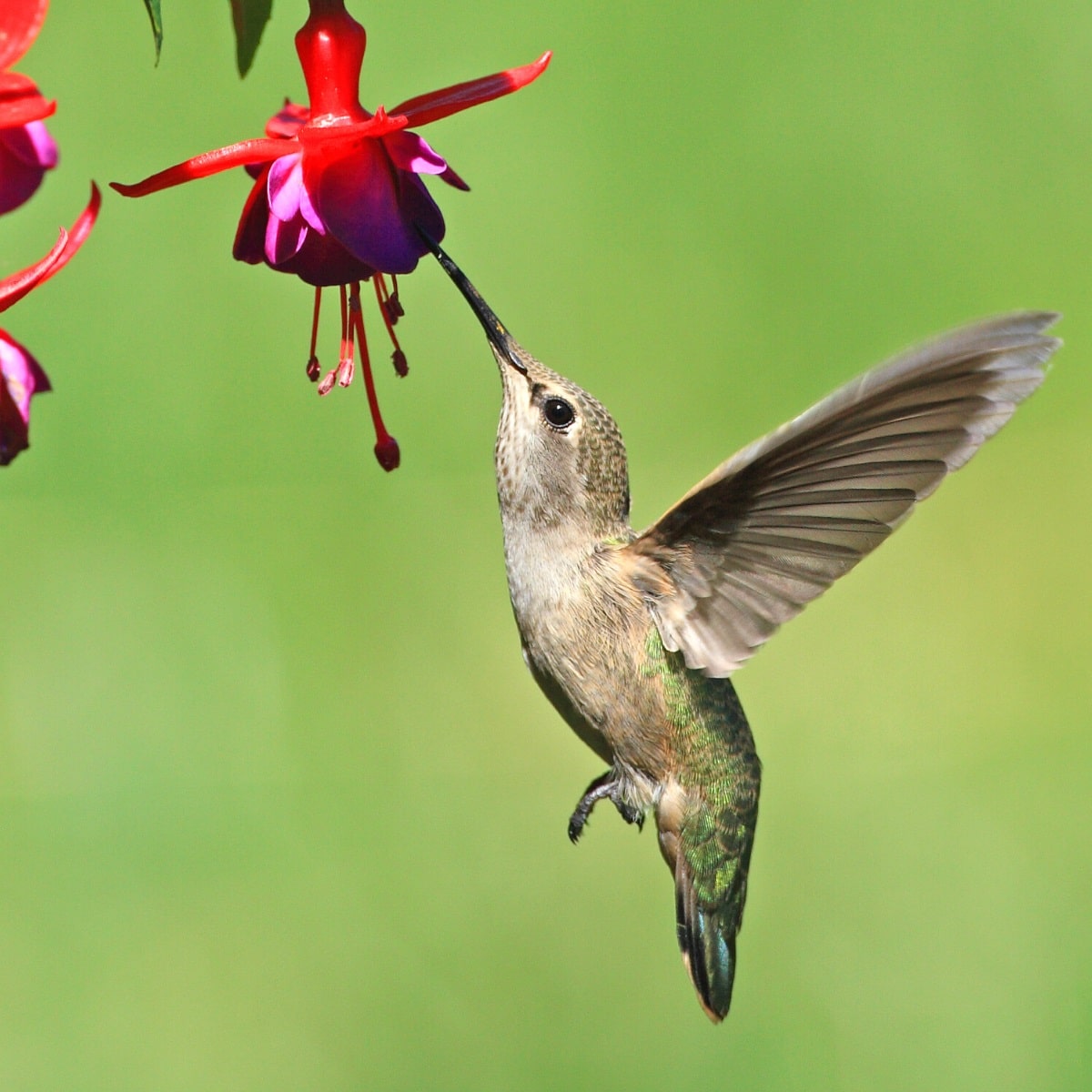
Once you have the feeder in a new place, be sure to use the tips above to keep from attracting ants again.
You should also employ one of the below tips to help prevent ants from exploring your feeder and establishing a new scent trail to lead others to the food source.
5. Grow Mint Around the Base
The strong sense of smell that ants have makes it hard to keep them out of your feeder, but it can also be used against them.
Some strong-smelling plants are known to repel ants. One of the most common and easy ones to grow is mint. By planting mint around the base of your hummingbird feeder pole or around the structure your feeder is hanging from, you can help keep ants out of the area.
You can also use mint and bay leaves placed around the base of your pole to keep ants from climbing it. Mint essential oil sprayed on the pole or around the hanger for the feeder can also help keep ants away.
6. Install an Ant Moat
One of the most effective ways to keep ants out of your hummingbird feeder is to install an ant moat. These smart little devices, which are shaped like a cup, keep ants from crawling down your hanger and onto your feeder by creating an impassable moat of water.
Some hummingbird feeders come with an ant moat built in. We’ve found better success with the detachable moat hangers because they tend to be deeper, which means the water inside will last longer.
- 🕒Tinlaviy ant moat with a large 4 oz capacity that not reauires frequent...
- ❤Our ant moat can attract hummingbirds with their favorite color.
- 🌹Add a touch of elegance to your garden with a flower-shaped design that...
To use an ant moat, simply fill it with water, then use it to attach your feeder to the hook. Because ants can’t swim, it will keep them from being able to access the feeder.
You do have to be mindful with these, as they will only work when filled with water. If they get too shallow or too many dead ants pile up inside them, ants will be able to make their way across. These bugs are persistent, so you’ll have to be equally dutiful until they finally give up on the food source.
7. Use Fishing Line
If you live in a dry or hot climate where an ant moat is likely to evaporate too quickly to be effective, then fishing string is a good second choice. Fishing line should be strong enough to hold most feeders. But be sure you tie your knots plenty tight to avoid slippage.
This string tends to be too slick and thin for ants to hang onto. By hanging your feeder with it and using enough length to keep brave ants from attempting the cross, you can keep ants out of the feeder.
Some people recommend putting oil or Vaseline on the line to make it extra treacherous for the ants, but this isn’t a good idea. The problem is not that it wouldn’t be effective; it’s that this sticky stuff can get on hummingbirds’ feathers and make it difficult for them to fly.
These products have their place in battling ants, but it’s not here. We’ll explain more below.
8. Ground Your Feeder in Water
An ant moat works well but requires constant refilling. A similar solution that takes much less tending is to ground your feeder pole in water. This is a great option if you have a pond or fountain in your yard.
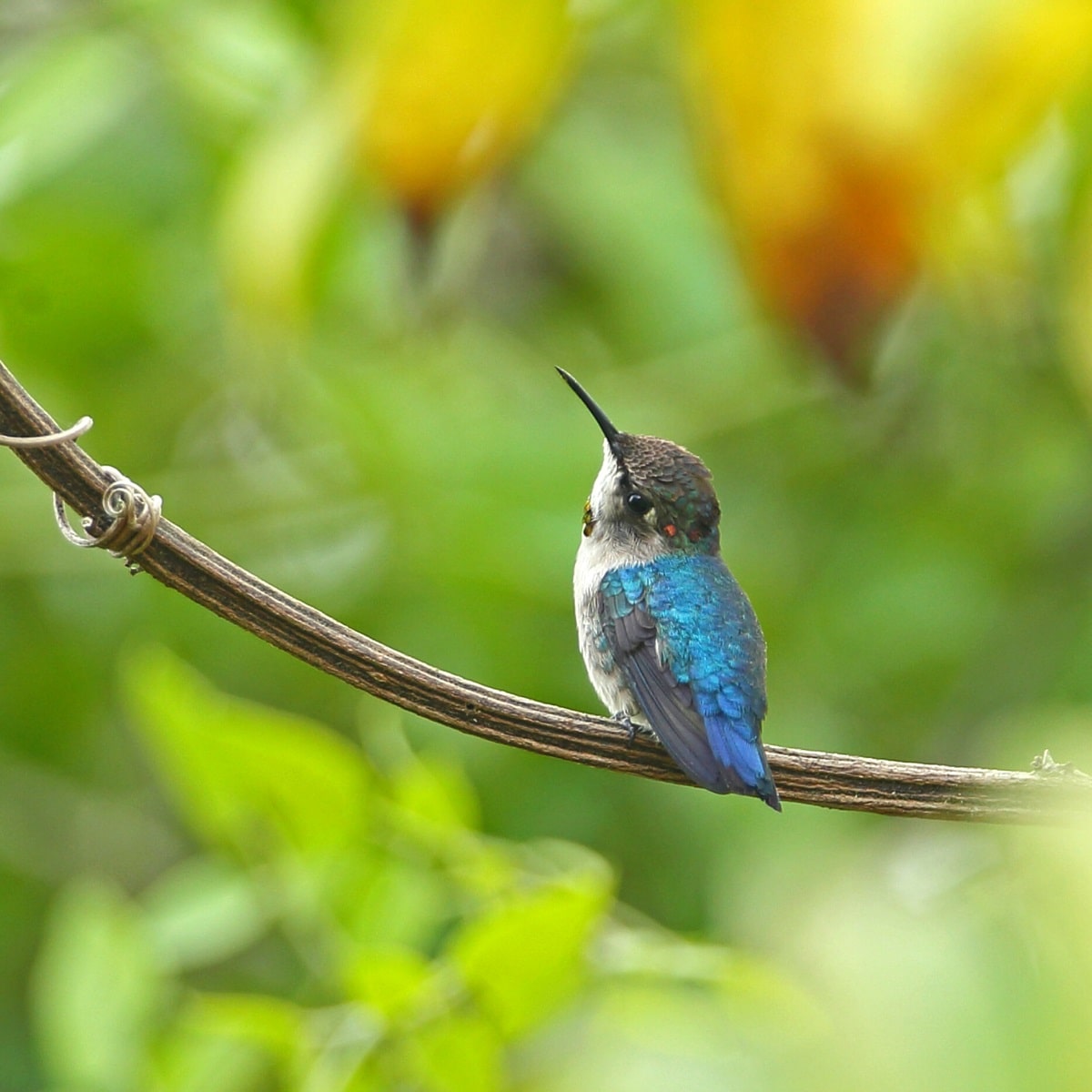
Simply secure the hanging pole inside the water feature using bricks or stones to keep it upright. Or you could use clamps to secure it to a cinder block. The key here is that the base of the pole must be submerged so that ants can’t get to it.
A deep bird bath with a stabilized pole could even work and would pull double duty to attract birds to your yard.
9. Coat the Bottom of the Pole in Petroleum Jelly
Using vegetable oil or petroleum jelly near the feeder itself poses a danger to hummingbirds, but using it near the base of the hanger pole is an option.
Coating the bottom of the metal hanging pole with a sticky or slick substance can keep ants from being able to climb the pole. Just be sure that no plants or debris nearby will give them a way to bypass this impasse.
This option does not work if your feeder is hanging from a structure unless you’re willing to coat all areas of the structure that touch the ground. Since you have to reapply the substance every few days to make it effective, this isn’t the easiest solution.
10. Create a Cone of Sticky Paper Around the Pole
Another option if your feeder is hanging from a pole is to create a cone or wrap using sticky paper and secure it to the bottom of the pole.
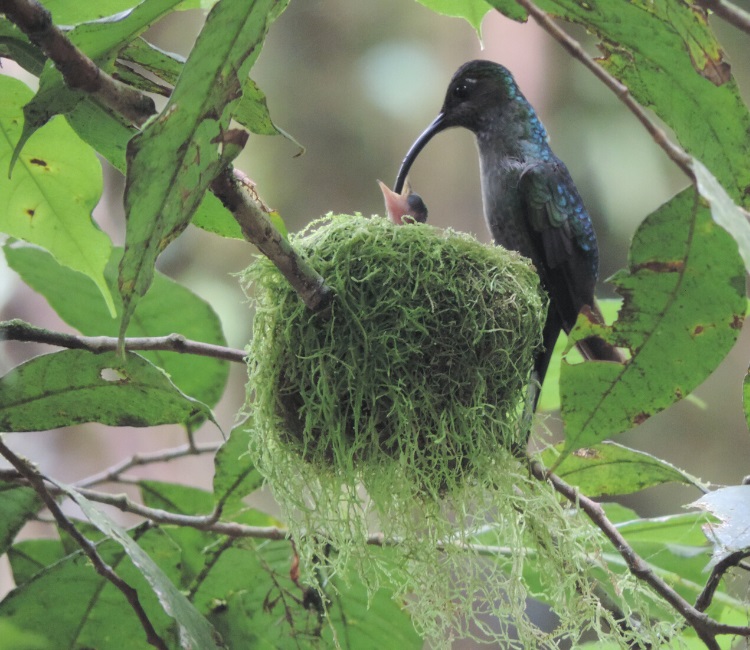
The key here is to make sure the paper is tight enough against the pole that the ants can’t sneak under it. Because of this, this solution tends to work better for thwarting larger species.
Just like with oil and petroleum jelly, it’s important to only use sticky paper or double-sided tape near the ground. These products can easily trap or injure lightweight hummers that get too close. So be sure you don’t place them anywhere near the feeder itself.
11. Dust the Base in Diatomaceous Earth
One option that works for both feeders on poles and feeders suspended from structures is to use diatomaceous earth to prevent ants from accessing the feeder.
Diatomaceous earth, which is made of tiny, sharp pieces of silica, is a natural product known to pierce and dehydrate the exoskeleton of insects. When ants crawl through diatomaceous earth, the dehydrating dust gets on them and kills them. Because of this, they will avoid it when possible.
By creating rings of diatomaceous earth around the base of your hanger pole or the footers of the structure, you can keep ants from climbing it.
Just be sure to create deep rings of diatomaceous earth so the powder will contact the ant’s body instead of just their feet. And reapply the powder as needed after rain and heavy wind.
